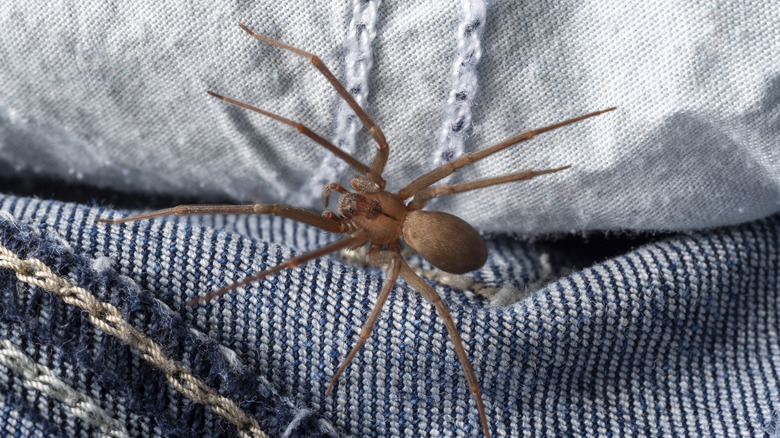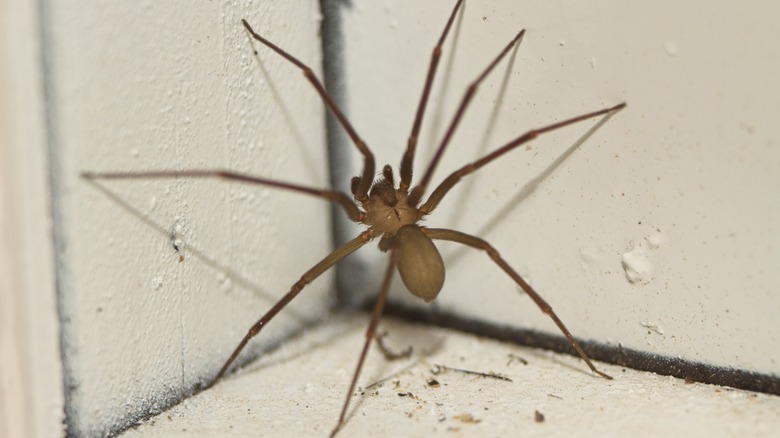Here's Where Brown Recluse Spiders Are Most Likely To Be Lurking In Your Home
You grab a bath towel from the cupboard and shake it free of folds. Out tumbles a tiny brown spider. You jump back in fright, then lean closer to look. Is that ... a violin-shaped mark on its back? Knowing how to identify and get rid of dangerous brown recluse spiders is an essential skill for some U.S. homeowners. If you have one, it may be lurking in dark, dry, warm spots in your home — from that corner behind the clothes dryer in your basement or that pile of paper recycling to your disused winter coats, shoes, and woolly hats.
The brown recluse spider (Loxosceles reclusa) is native to the South and Central U.S. states. Though they've hitched rides to other states and even other countries, they don't typically survive long. If you dare to get close, they have two distinctive features: the aforementioned violin-shaped marking and six paired eyes. In the wild, the spiders live up to their namesake. During the day, they hide away in tree cavities, fallen tree trunks, and under rocks, coming out to hunt their insect prey at night. It makes sense that they'd seek similar safe spots in your home. Webs with egg sacks in hidden-away spots can be a sign of brown recluse habitation. An insect-infested house can also attract them — it's a ready food supply. They're most active between March and October.
Home hideouts
If you live in one of the sixteen states brown recluses reside in, they're among the types of spiders you might commonly see coming in through poorly sealed window gaps and cracks in the floors, walls, and foundations or under the door. If you have an attic, they get in through the roof. They can even arrive in your home on delivered items. Once inside, they gravitate toward warm, dry, and dark places with little foot traffic. This could include drawers, closets, cupboards, kitchen cabinets, storage boxes — or any items stored in them, including clothes and shoes. They may also reside under furniture, behind wall art, in window wells, or amongst stacks of paper or books. In the bathroom, check for them behind the toilet or counter. Under the stairs or the furnace in the basement is another favored spot.
Brown recluses are notoriously shy and will avoid any contact with you. Plus, they're nocturnal, meaning you're unlikely to see them crawling along your floor, especially during the day, unless trapped in a bath or sink (they can't grip smooth surfaces). Though poisonous to humans, brown recluse spiders rarely bite people — though that doesn't mean you shouldn't act cautiously around them. Wear gloves when cleaning out-of-the-way areas of your home and shake out bedding and infrequently used clothes and shoes before using or wearing them.

